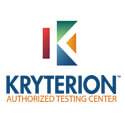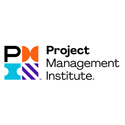AWS Certified Solutions Architect Associate
About This Course
The AWS Certified Solutions Architect Associate certification program is designed to assist professionals learn in-depth knowledge of AWS (Amazon Web Services) architectural services and principles. Professionals learn the role of cloud in reshaping IT architectures and ways to plan, design and scale the AWS cloud projects using industry best practices as authenticated by Amazon.
The AWS Certified Solutions Architect Associate certification helps you understand core concepts, current trends, and industry best practices to work with AWS architecture. It helps you become an industry-ready AWS solutions architect, which will validate your skills as a quality AWS expert. Live projects and assignments included in the coursework offer hands-on experience.
Who Should Attend This Course
The AWS Certified Solutions Architect Associate certification training is apt for professionals who seek to build a bright career in the Cloud computing domain or wish to create Cloud apps with AWS.
Why This Course
AWS certifications are fast turning out to be effective and worthy certificates for IT professionals working in the AWS domain. This course helps you prepare for the AWS Certified Solutions Architect (CSA) – Associate Exam.
Also, AWS Cloud powers tons of enterprises in more than 150 nations and having. An AWS certified solutions architect makes around $126,000 annually.
After successful completion of this course, you will achieve the following:
- Design solution plans on AWS architectural industry best practices
- Design as well as deploy highly available, scalable and fault tolerant systems
- Deciphering the egress and ingress of data to-and-from AWS
- Selecting apt AWS service basis of database, data or security requirements
- Estimating AWS costs
- Identifying cost control
- Increased pay and better career prospects
- Accepted worldwide
Course Objectives
- Developing solution plans and offering guidance on AWS best practices
- Designing and deploying scalable systems on AWS
- Identifying the lift and shift of existing on-premise applications to AWS
- Deciphering dataflow to-and-from AWS
- Selecting appropriate AWS services based on database, data or security requirements
- Estimating AWS costs
- Identifying cost control processes
Course Prerequisites
- Experienced IT people with knowledge of AWS platform as well as traditional IT infrastructure
- Knowledge of high availability, business continuity, network design, deployment management, security, scalability, data storage, hybrid architecture and cloud migration.
- AWS Technical Essentials or equivalent experience
Course Benefits
This AWS certification program will prepare you for the AWS Solution Architect Associate exam whilst enabling you to utilize your expertise and knowledge involving advanced cloud solutions and shifting the existing workload to cloud.
After successful completion of this course, you will achieve the following:
- Design solution plans on AWS architectural industry best practices
- Design as well as deploy highly available, scalable and fault tolerant systems
- Deciphering the egress and ingress of data to-and-from AWS
- Selecting apt AWS service basis of database, data or security requirements
- Estimating AWS costs
- Identifying cost control
- Increased pay and better career prospects
- Accepted worldwide





























